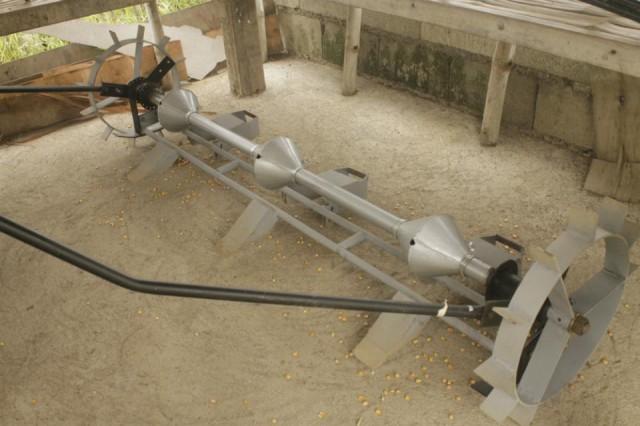UP student invents mechanical corn planter
Following the success of Josine Macaspac, the 27-year old entomologist from University of the Philippines who invented a mechanical bug remover for farm produce, another Pinay and fellow Iskolar ng Bayan is about to make waves with her invention aimed at improving corn farming.
Rosette Sabiniano, a 21-year-old mechanical engineering student, invented a device that speeds up the laborious process of corn planting.
Sabiniano is a native of San Jose City in Nueva Ecija, the largest province and the biggest rice producer in the country. Spending most of her childhood with her grandfather, she would always watch her Tatang in amazement as he effortlessly plow the fields under the searing heat of the sun.
“He is the most dedicated and hard-working farmer I know. Because of him and his ideals, I learned to respect not just the farmers but the working class in this country,” she said.
As a self-confessed Lolo’s girl, she shared that it was her grandfather who inspired her to advocate for the farmers and to use her talents and knowledge to think of ways to improve their lives.
With the vision of helping the drivers of food production in the country, Sabiniano designed a mechanical corn planter—a cheap, sustainable and easily assembled equipment which significantly increase productivity of farmers.
Corn is the second most abundant crop in the country. Considering the method of corn farming in the Cagayan Valley region, the largest producer of corn in the country, Sabiniano designed an alternative way of sowing for small-scale farming.
Her device uses galvanized iron tubes, metal sheet, two bearings, and metal plates.

“The important parts of the design were the diameter of the seed containers, the position of the holes of the seed containers, the diameter of the wheels and its anti-slippage structure and the structure of the furrower,” she said.
The device has three functions, which it simultaneously executes when being used: furrowing, seed dropping, and seed covering. The farmers just have to push down the controller or the handle up to the desired depth of cut in the soil and pull the equipment.
In the traditional way of farming, these methods are undertaken separately, with the farmer sowing the soil first with a carabao or a tractor and then individually dropping seeds.
“Based on my results, the equipment is 14 times faster than the method of planting applied today, so I think, that speaks for it,” Sabiniano said.
In her study, she compared how long a farmer could plant corn in a 500 m2 plot of land. Using manual labor, it took about 1 hour and 47 minutes. With the use of her corn planter, farming that size of a land only took about 7 minutes.
Another advantage of the device is it is made with separate parts which can be interchanged.
“It can be disassembled part by part, so that, when a component malfunctioned, the farmers will not have to change everything, but only that specific component,” she said.
For Sabiniano, the device would be of help to small-scale farmers who do not have the finances to acquire big equipment meant for large-scale farming.
“Sa nakikita ko kasi ngayon sa Pilipinas, yung mga equipment na available ay pangmaramihan, pangmalakihang sakahan. Pero nakakalimutan yata natin na large percentage ng mga magsasaka sa Pilipinas ay mahihirap. Maliliit lang sinasaka nila at hindi nila afford yung pinoproduce na equipment,” she noted.
“My main goal here is to help the poor farmers,” she added.
Sabiniano’s project won second place in the 2016 Undergraduate Project Competition of the UP College of Engineering. After graduation, she plans to coordinate with the Department of Agriculture (DA) for the future of her project.
“I want to reach out to the farmers, help them create their own corn planter with the aid of DA. And as an Inhinyero ng Bayan, I want to help them by utilizing my knowledge and skills in designing an agricultural equipment that will make their lives easier,” she said. — TJD, GMA News




